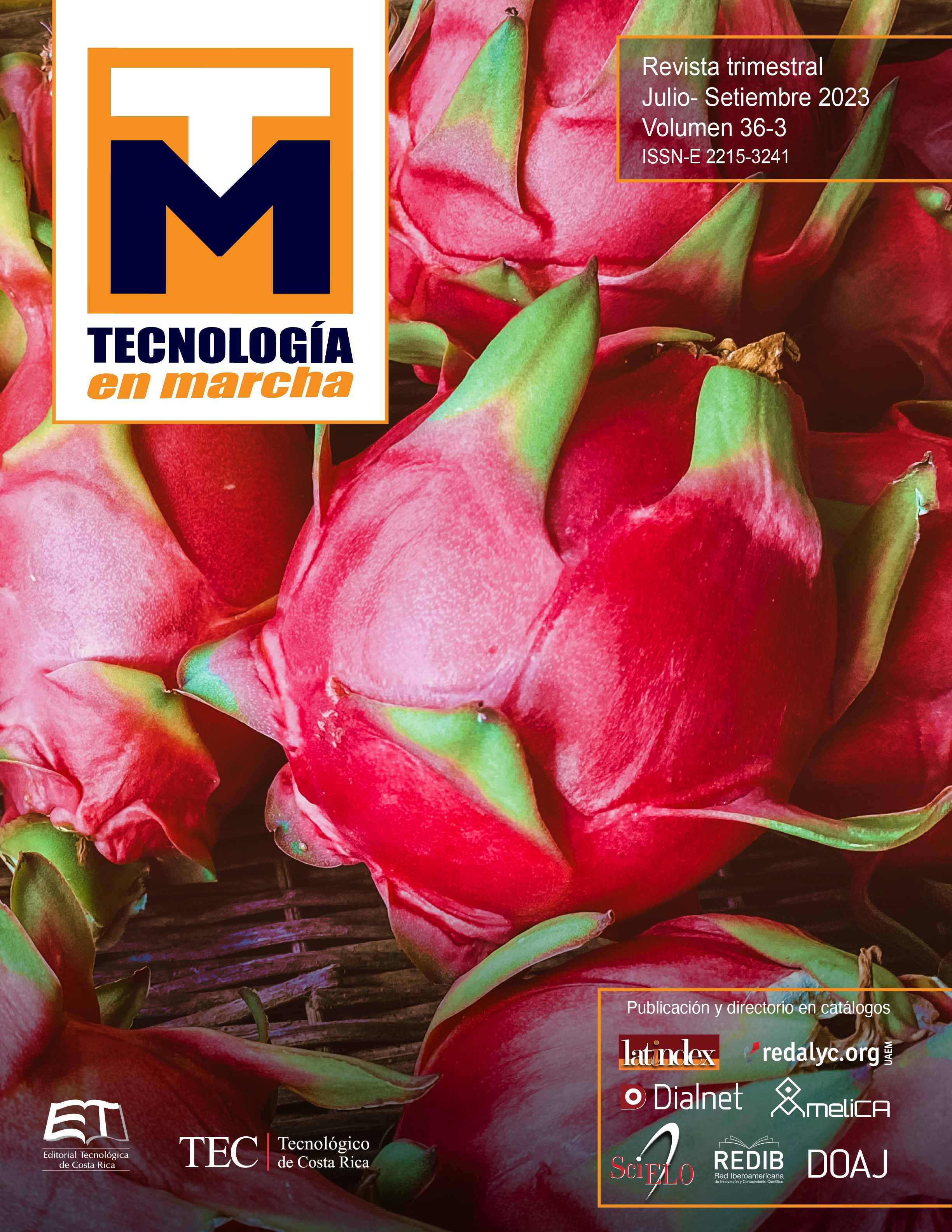Native Bamboo Construction Technology. Otatea Fimbriata Soderstr., in the State of Chiapas, Mexico
Main Article Content
Abstract
Bamboos are plants belonging to the botanical family of grasses (corn, rice, reed, sugar cane) and the subfamily Bambusoideae, which groups a great diversity of species distributed worldwide, particularly in the state of Chiapas are a large part of the species registered for Mexico, which because they are of a natural nature become underused and / or despised giving them the qualification of Lag, preferring therefore to the use of industrialized materials for the conformation of living spaces, which are framed under the notion of progress. In this way, a methodological process is proposed from a qualitative research, where the referential theoretical framework was built through the bibliographic review, under the objective of denoting the use and exploitation of the native bamboo Otatea fimbriata Soderstr., found locally. In this sense, the present research allowed to demonstrate that the native bamboo present in the state of Chiapas, is a natural resource, whose physical and mechanical properties endow it with a high potential to be used not only in the conformation of living spaces, but at the same time to generate diversity of products and services, reaching a positive impact on the families that make up the localities of Chiapas.
Article Details

This work is licensed under a Creative Commons Attribution-NonCommercial-NoDerivatives 4.0 International License.
Los autores conservan los derechos de autor y ceden a la revista el derecho de la primera publicación y pueda editarlo, reproducirlo, distribuirlo, exhibirlo y comunicarlo en el país y en el extranjero mediante medios impresos y electrónicos. Asimismo, asumen el compromiso sobre cualquier litigio o reclamación relacionada con derechos de propiedad intelectual, exonerando de responsabilidad a la Editorial Tecnológica de Costa Rica. Además, se establece que los autores pueden realizar otros acuerdos contractuales independientes y adicionales para la distribución no exclusiva de la versión del artículo publicado en esta revista (p. ej., incluirlo en un repositorio institucional o publicarlo en un libro) siempre que indiquen claramente que el trabajo se publicó por primera vez en esta revista.
References
E. Ruiz-Sanchez, “Los bambúes de México: diversidad, conservación y uso,” Biodiversitas, vol. 143, pp. 13–16, 2019.
E. Ruiz-Sanchez, L. G. Clark, X. Londoño, T. Mejía-Saulés, and G. C. Rodríguez, “Morphological keys to the genera and species of bamboos (Poaceae: Bambusoideae) of Mexico,” Phytotaxa, vol. 236, no. 1, pp. 1–24, 2015, doi: 10.11646/phytotaxa.236.1.1.
E. Ruiz-Sanchez et al., “Diversity, distribution, and classification of Neotropical woody bamboos (Poaceae: Bambusoideae) in the 21st Century,” Bot. Sci., vol. 99, no. 2, pp. 198–228, Feb. 2021, doi: 10.17129/BOTSCI.2722.
O. Hidalgo López, Banboo, the Gift of the Gods. Bogotá, 2003.
A. Yerania, C. Cuenca, A. León-merino, D. M. Sangerman-jarquín, M. Hernández-juárez, and M. Cristina, “Socioeconomic aspects of the use of bamboo in a rural community of Veracruz , Mexico Introducción El bambú es una gramínea leñosa gigante , perteneciente a la clase Bambuseae ,” Rev. Mex. Ciencias For., vol. 11, no. 62, 2020, [Online]. Available: http://www.scielo.org.mx/scielo.php?pid=S2007-11322020000600033&script=sci_arttext.
R. M. Roddríguez, G. Leopoldo, W. Sánchez, L. M. Gómez, A. E. Zarco. A., and E. Ceccon, “Usos actuales, distribución potencial y etnolingüística del bambú leñoso en México,” in Tradiciones & transformaciones en Etnobotánica, CYTED-Prog., no. January, P. M. A. MARÍA LELIA POCHETTINOANA H. LADIO, Ed. Argentina, 2010, pp. 355–363.
E. Ruiz-Sanchez, V. Sosa, M. T. Mejía-Saules, X. Londoño, and L. G. Clark, “A taxonomic revision of Otatea (Poaceae: Bambusoideae: Bambuseae) including four new species,” Syst. Bot., vol. 36, no. 2, pp. 314–336, 2011, doi: 10.1600/036364411X569516.
H. R. Sampieri, Metodología de la Investigación, Sexta edic. México, 2014.
M. F. Hernández-Zamora, S. I. Jiménez-Martínez, and J. I. Sánchez-Monge, “Materiales alternativos como oportunidad de reducción de impactos ambientales en el sector construcción,” Rev. Tecnol. en Marcha, vol. 34, pp. 3–10, 2021, doi: 10.18845/tm.v34i2.4831.
MEXU, “IBdata v3 ‘Helia Bravo Hollis,’” Universidad Nacional Autónoma de México, Instituto de Biología, 2021. https://www.ibdata.abaco3.org/web/web-content/admin-queryfilter/queryfilter.php (accessed Dec. 15, 2021).
CONABIO, “Sistema Nacional de Información sobre Biodiversidad. Registros de ejemplares.” Comisión Nacional para el Conocimiento y Uso de la Biodiversidad, Ciudad de México, México., 2021, [Online]. Available: http://www.snib.mx/.
CONABIO, “Otates (Otatea),” Comisión Nacional para el Conocimiento y Uso de la Biodiversidad, 2021. https://enciclovida.mx/especies/140922-otatea (accessed Dec. 15, 2021).
H. D. Llaven José, “Potencialidades del bambú nativo en comunidades de suchiapa, chiapas.,” Universidad de Ciencias y Artes de Chiapas, 2020.
H. D. Llaven José, G. Castañeda Nolasco, C. A. Guillén Guillén, and Y. Barnet, “Resistencia a la compresión paralela a la fibra de una especie de bambú nativo de México (Otatea fimbriata Soderstrom),” Acad. XXII, vol. 10, no. 20, p. 171, 2019, doi: 10.22201/fa.2007252xp.2019.20.72348.
CONABIO, “Herbario Eizi Matuda HEM de la Universidad de Ciencias y Artes de Chiapas.” Herbario Faustino Miranda, Tuxtla Gutiérrez, Chiapas, México, 2018, [Online]. Available: http://www.biodiversidad.gob.mx/fichas-conabio-war/resources/coleccion/1015.
INEGI, “Censo de Población y Vivienda,” Censo de Población y Vivienda, México, 2020. [Online]. Available: www.cuentame.inegi.org.mx.
A. Nivon, M. López, L. Jiménez, G. Castañeda Nolasco, J. L. Jiménez, and F. de A. Unach, “Vivienda Climáticamente Inteligente,” 2019.

